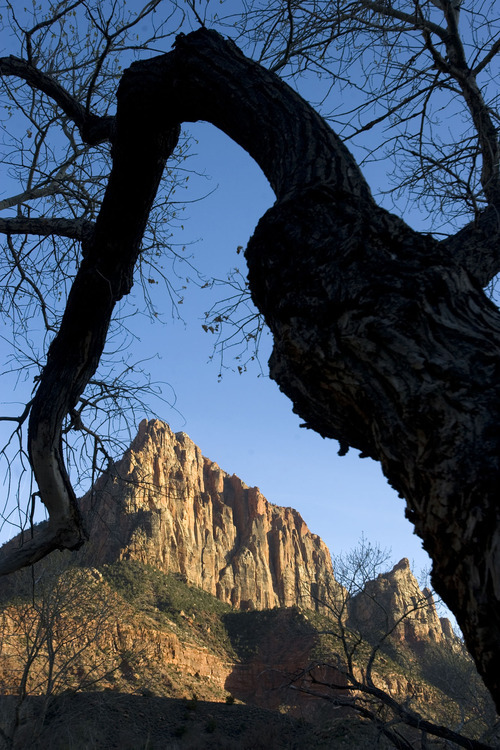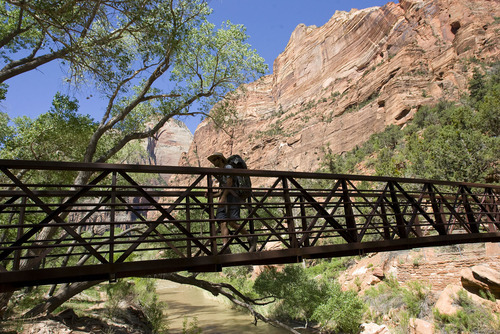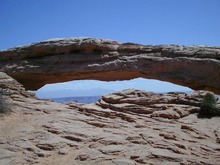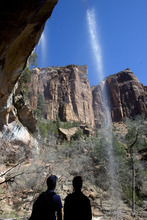This is an archived article that was published on sltrib.com in 2011, and information in the article may be outdated. It is provided only for personal research purposes and may not be reprinted.
America's national parks suffer from a "serious illness," but a conservation group is pointing to a multipronged cure:
Boost funding, protect artifacts, rein in development, guard against climate change, enforce environmental laws, control non-native species, reintroduce native ones and even create more parks.
So recommends the National Parks Conservation Association, which urged the Obama administration Tuesday to develop a long-term plan to address the many challenges facing the National Park Service and provided a road map for action in its "State of America's National Parks" report.
The organization, a nonprofit park-advocacy group, hopes to see information from the report, which studied 80 of the 394 National Park Service units over 10 years, used in a five-year plan leading up to the 100th anniversary of the park service in 2016.
"Our national parks are places we go for reflection, inspiration and connection to our national heritage — they are places we as Americans decided to protect to showcase where America's story has unfolded. But new data shows that our national parks are in serious jeopardy," said Tom Kiernan, president of the National Parks Conservation Association. "As we approach the centennial of the National Park Service, we have a responsibility to ensure our American treasures are preserved and protected for the future."
Utah national parks — there are five — in the report included Bryce Canyon, Canyonlands and Zion.
Bryce Canyon, visited in 2005, earned a "good" rating for its natural resources with clear skies and a successful reintroduction of Utah prairie dogs. But Bryce's cultural resources were dinged as "poor" due to funding and staffing shortfalls for protection of the park's archive and museum collections.
The Canyonlands report, compiled in 2004, listed concerns about non-native invasive plants and fish outnumbering native species. Staff shortages may be connected to 71 percent of the historic structures being affected by vandalism, weather, neglect, erosion and animal and pest infestation. The archives and museums of Canyonlands suffer because it shares a part-time curator with three other parks.
Zion, Utah's most popular park with more than 2 million visitors a year, is grossly understaffed, the report found, hindering its ability to share information about its unique landscapes and history — with more than 105,000 visitors for each interpretive staff member.
Besides noting an annual funding shortfall of $600 million at the National Park Service, the report identified serious threats from air and water problems, invasive species, climate change and energy and land development.
Officials reported that the $600 million needed for the parks amounts to 1/13 of 1 percent of the federal budget and argued that the parks are an economic investment for the communities, many of them rural, that surround them.
"Every dollar invested," Kiernan said, "yields a minimum of $4 in economic return."
Of course, increasing funding in a time of tight budgets would be a tall order. But the lack of money, the group warned, leads to looting, building neglect and unorganized museum collections.
Among the report's key findings:
• Nearly all of the parks studied had at least one wildlife or plant species that has disappeared from its boundaries. Invasive species are crowding out native ones.
• More than 60 percent of the parks have compromised air quality and many endure serious water-quality threats.
• Two-thirds of the park service's units are designed to protect important historic or cultural sites, but 90 percent of those surveyed showed cultural resources in deficient condition.
• More than 60 percent of the 27,000 historic structures in the park system are neglected.
Jim Nations, vice president of the group's Center for Park Research, said the park service and its employees deserve "immense credit" — despite too little funding and too few staffers — for safeguarding important natural and cultural resources.
Nearby development also has created problems for park wildlife, reducing their habitat and limiting their range.
"Many parks have become national biological lifeboats," Nations said. "Unfortunately, those lifeboats are leaking. We have lost many key species."
Meanwhile, Nations said, "climate change is melting glaciers in Glacier National Park and it is also prompting some mammals to change migration patterns."
This report, Kiernan added, is "our wake-up call."
"The natural and historical treasures that Americans value have been vulnerable for too long," he said. "This is a turning point in the history of our parks, and we must not break the promise that past generations made to our children and grandchildren."
Fixing the parks
National Parks Conservation Association recommends the following to revive America's national parks:
Reintroduce native wildlife • After the successful reintroduction of wolves in Yellowstone National Park and elk in Great Smoky Mountains National Park, the National Park Service should reintroduce key species of native wildlife into additional park ecosystems to re-establish their essential role in natural processes.
Control non-native invasive species • The administration should use existing authority to control the entry of non-native plants, animals and diseases into the country — and provide resources needed to eliminate or limit the impact of existing non-native invasive species on the national parks.
Enforce air-quality laws • State regulators, the U.S . Environmental Protection Agency, and the park service should work together to ensure all national parks meet the standards mandated by federal law and park policies.
Collect critical water data • The park service should collect comprehensive baseline data on national park water quality, water flows and aquatic communities to monitor and defend against the impacts of development and extraction activities taking place on adjacent lands.
Monitor and respond to impacts of climate change • The park service should increase data collection and analysis on the impacts of climate change, use the parks as observatories to advance understanding of the consequences of climate change for natural and cultural resources, and mitigate the damages that climate change can produce.
Improve the condition of cultural resources • The park service should develop a multiyear strategic initiative to improve the condition of cultural resources. This initiative should include strategies for addressing the inadequate level of protection for historical buildings and historical artifacts.
Reduce threats from adjacent lands • The administration should enforce existing laws to reduce threats from adjacent lands — including resource extraction, air and water pollution, and development — that impair ecological functions, fragment wildlife habitat, and degrade natural or cultural landscapes.
Manage adjoining lands cooperatively • The president should issue an executive order requiring federal agencies to manage their lands and waters cooperatively with surrounding landscapes to conserve and restore natural ecosystems and watershed health. The order should direct federal agencies to partner with state, local and tribal governments, private landholders, nonprofit organizations and one another to conserve and restore large landscapes identified as ecologically significant by the park service.
Expand the park system • By 2012, the park service should prepare a new plan that identifies key park wildlife habitat, lands required to implement climate-change adaptation and mitigation, and under-represented themes of U.S. history and cultural diversity. The president and Congress should establish new parks and expand existing ones.
Boost funding and staffing • Congress and the administration should provide sufficient funding and staffing for park operations, maintenance, construction and land acquisition.
O Read the group's report online. > http://www.npca.org









